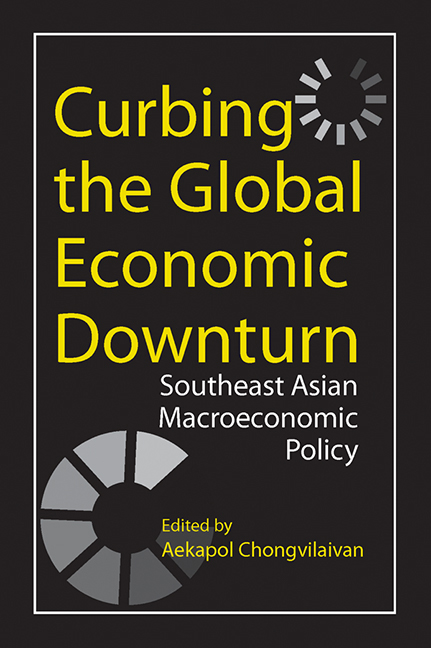Book contents
- Frontmatter
- Contents
- Acknowledgements
- Introduction
- List of Contributors
- PART I Economic Fluctuations: Macroeconomic Effects and Policy Responses
- 1 Macroeconomic Impacts of a Financial Crisis
- 2 Capital Inflow Reversals, Current Account Adjustments, and Macroeconomic Performance
- 3 Supply-Side Causes of Macroeconomic Fluctuations in a Small Open Economy
- 4 Effectiveness of Fiscal Stimuli
- 5 Public Debt Sustainability and Its Macroeconomic Impacts
- PART II Economic Co-operation in Southeast Asia
- Index
1 - Macroeconomic Impacts of a Financial Crisis
from PART I - Economic Fluctuations: Macroeconomic Effects and Policy Responses
Published online by Cambridge University Press: 21 October 2015
- Frontmatter
- Contents
- Acknowledgements
- Introduction
- List of Contributors
- PART I Economic Fluctuations: Macroeconomic Effects and Policy Responses
- 1 Macroeconomic Impacts of a Financial Crisis
- 2 Capital Inflow Reversals, Current Account Adjustments, and Macroeconomic Performance
- 3 Supply-Side Causes of Macroeconomic Fluctuations in a Small Open Economy
- 4 Effectiveness of Fiscal Stimuli
- 5 Public Debt Sustainability and Its Macroeconomic Impacts
- PART II Economic Co-operation in Southeast Asia
- Index
Summary
INTRODUCTION
The onset of the Asian financial shock in the summer of 1997 led to a simultaneous contraction of almost all sectors of production in the crisis-hit country. While the theory of propagation mechanisms from the financial to the real sector in business cycle has been explored (see, for example, Bernanke, Gertler, and Gilchrist 1996), empirical works that aim to identify and measure a shock impact within a general equilibrium framework are rare. This paper attempts to fill the gap.
Using the specific case of Indonesia, Thorbecke (1998) and Azis (1998, 2000a) were among the first who attempted to adopt a general equilibrium model for such an analysis. While the former used the Social Accounting Matrix (SAM) multipliers, the latter traced the economy-wide impacts using Structural Path Analysis (SPA) and subsequently employed a price-endogenous CGE model with detailed specifications of the financial sector.
The limitation of previous SAM multipliers and SPA studies was the arbitrary manner with which the shock is introduced to the modelled economic system. Within these studies, the standard practice was to induce an artificial fall in the output of sectors that are known ex-post to contract during the crisis. Such an ad hoc method of introducing shock into the system does not capture the actual mechanics of the crisis which was triggered by movements in the financial variables (i.e., foreign capital) rather than in production. The problem is that sectoral output can decline because of numerous types of shocks, of which a financial turmoil is only one of them. Simply reducing the sectoral output artificially thus fails to recognize the origin of the crisis and neglects the linkage between financial sector and the rest of the economy.
- Type
- Chapter
- Information
- Curbing the Global Economic DownturnSoutheast Asian Macroeconomic Policy, pp. 3 - 26Publisher: ISEAS–Yusof Ishak InstitutePrint publication year: 2010

